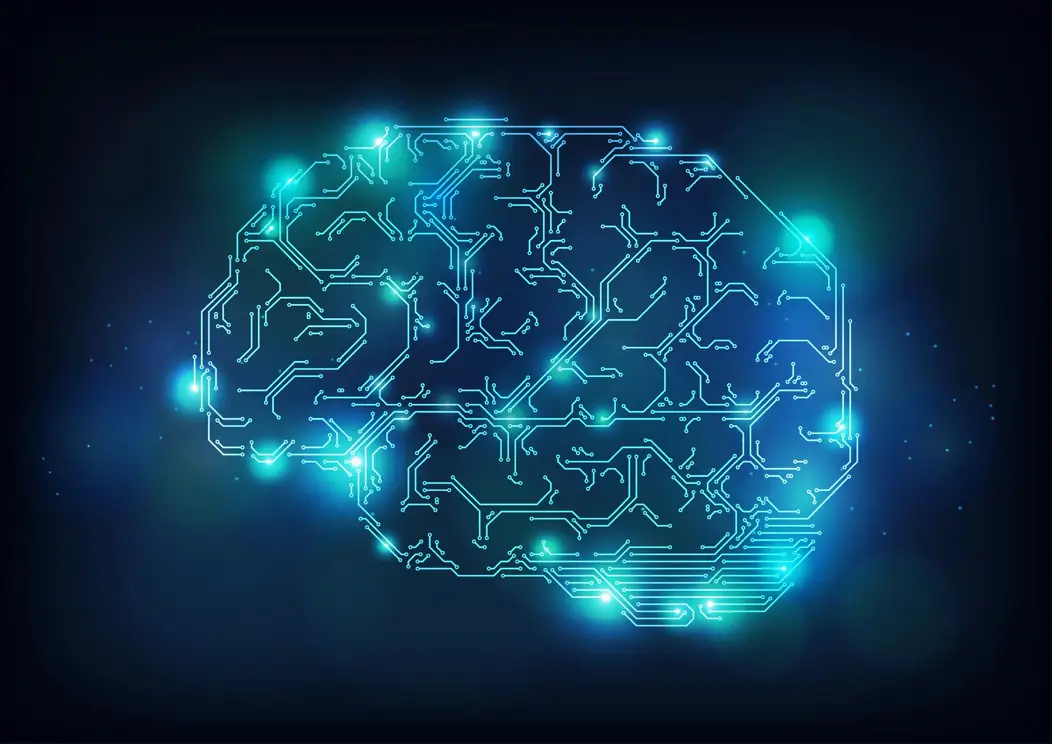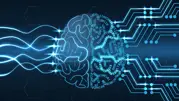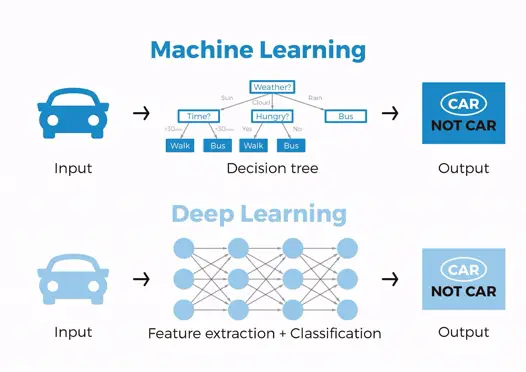What is Deep Learning? Outstanding Benefits of Deep Learning
Welcome to Aniday's comprehensive guide on "What is Deep Learning." In this article, we'll unravel the intricacies of deep learning, exploring its definitions, operating principles, benefits, limitations, and its applications in the world of artificial intelligence. Whether you're a novice seeking to understand the basics or a seasoned professional looking to delve deeper into this fascinating field, Aniday has you covered. Let's embark on a journey to demystify the exciting realm of deep learning and discover its remarkable potential.
What is Deep Learning?

At the beginning of the article, let's learn the definition of "What is Deep Learning?" Deep Learning encompasses the following characteristics:
- A machine learning method based on constructing and training artificial neural networks (ANN) to learn from data.
- An artificial neural network mimics the human brain's functioning, comprising interconnected layers of neurons.
- Each neuron receives, processes, and transmits information.
- Neuron layers are categorized into three types: input layer, output layer, and hidden layers in between.
- The number and structure of hidden layers determine the neural network's depth.
- Neural networks with numerous hidden layers are termed deep neural networks (DNN).
Operating Principle of Deep Learning

To delve further into "What is Deep Learning?", it's crucial to understand the operating principle of Deep Learning. It operates by training deep neural networks to learn from data. The training process involves two main stages: forward propagation and backpropagation.
Forward Propagation Phase:
- Input data traverses neural layers from the input layer to the output layer.
- At each neuron, input information undergoes multiplication by a weight and addition with a threshold (bias). Then, an activation function is applied to generate output information.
- The activation function introduces nonlinearity, enabling the neural network to represent complex relationships between input and output data.
- Each neuron's output information becomes input for neurons in the subsequent layer, ultimately providing the neural network's predictions for the input data.
Backpropagation Phase:
- The neural network's predictions are compared with actual results to compute the error or loss function.
- The loss function quantifies the disparity between predictions and actual outcomes. The training objective is to minimize the loss function, making predictions as close to actual results as possible.
- Adjustments to neuron weights and thresholds are required to gradually decrease the loss function.
- These adjustments involve calculating the partial derivatives of the loss function concerning each weight and threshold, indicating the direction for minimizing the loss function.
- The chain rule is employed to calculate these partial derivatives, tracing from the output layer back to the input layer.
- After obtaining the partial derivatives, an optimization algorithm, such as gradient descent, updates the weights and thresholds to reduce the loss function.
The training process repeats numerous times until the loss function reaches a minimum value or ceases to decrease further. Consequently, a well-trained Deep Learning model emerges, capable of accurately predicting new data.
Advantages and Disadvantages of Deep Learning
Next, we'll delve into the pros and cons of "What is Deep Learning?":
Advantages:
- Deep Learning excels in learning from data, extracting complex and hidden features without the need for manual design as in traditional Machine Learning.
- It autonomously adjusts model parameters, optimizing performance and accuracy.
- Deep Learning adeptly handles unstructured data, including images, audio, text, or videos, without extensive preprocessing.
- It applies to diverse problem types, including classification, regression, clustering, data generation, data augmentation, and more.
Disadvantages:
- A substantial amount of data is required for training, particularly with deep and intricate neural networks, which can strain memory, bandwidth, computation, and security.
- Training models can be time-consuming, especially when using computationally demanding and unstable optimization algorithms, necessitating high-end hardware like GPUs, TPUs, FPGAs, etc.
- Concerns regarding model transparency, explainability, and accountability impact the reliability and safety of Deep Learning when employed in sensitive fields such as healthcare, finance, or law.
What Types of Problems Does Deep Learning Solve?
To delve deeper into understanding "What is Deep Learning?", Aniday will outline the problems Deep Learning can address, including:
- Computer vision: face recognition, object detection, image segmentation, image restoration, image super-resolution, image conversion, image translation, image synthesis, etc.
- Natural language processing: machine translation, sentiment analysis, information extraction, text summarization, text generation, question answering, dialogue, etc.
- Speech: speech recognition, speech conversion, speech synthesis, speech analysis, etc.
- Biology: Gene analysis (genomics), protein analysis (proteomics), epidemiology analysis (epidemiology), disease detection (disease detection), disease diagnosis (disease diagnosis), treatment outcome prediction (treatment outcome prediction), etc.
- Medical: Medical image analysis, tumor detection, tumor classification, tumor segmentation, medical image restoration, medical image super-resolution, medical image translation, medical image synthesis, etc.
Benefits of Deep Learning
When exploring "What is Deep Learning?", we must not overlook the benefits it offers. Deep Learning boasts numerous advantages compared to traditional Machine Learning methods, including:
- Proficiency in deep learning from data: Automatically extracting crucial features from data without manual design or human intervention.
- Handling unstructured data adeptly: Working with unstructured data types like images, audio, text, or video without requiring conversion into numerical or tabular formats.
- Self-improvement over time: Learning from experience and continually updating neural network weights to optimize performance.
Should Machine Learning Be Replaced with Deep Learning?

Deep Learning does not represent a one-size-fits-all solution to all Machine Learning problems. There are scenarios where traditional Machine Learning methods remain superior, such as:
- When data is scarce or insufficient for training since Deep Learning demands substantial data for learning complex features and avoiding overfitting.
- When model operation mechanisms must be explained since Deep Learning operates as a black box, making it challenging to elucidate its decision-making process. This can pose ethical, safety, or legal concerns, particularly in sensitive domains like healthcare, finance, or security.
Deep Learning Techniques
Deep Learning encompasses various techniques contingent on data types and problem objectives. Some of the most popular techniques include:
- Traditional neural networks (Feedforward Neural Networks): The simplest form, comprising layers linked in one direction from input to output, suitable for solving straightforward classification or regression problems.
- Convolutional Neural Networks: Employing convolutional layers to extract local data features, tackling image-related issues like face recognition, object detection, or image segmentation.
- Recurrent Neural Networks: Employing recurrent layers to process sequential data, such as audio, text, or video, addressing natural language processing problems such as machine translation, text summarization, or text generation.
- Attention Neural Networks: Utilizing attention mechanisms to focus on vital data components, addressing issues in natural language and image processing like generating images from text, generating text from photos, or generating titles for photos.
- Generative Adversarial Networks: Comprising two subnetworks, the generator and the discriminator, which learn from each other to produce new data resembling real data. They can address image generation problems such as enhancing image resolution, converting one image to another, or generating entirely new images.
Conclusion
In conclusion, Aniday has provided comprehensive insights into "What is Deep Learning." This article has unraveled the fundamentals of Deep Learning, its operational principles, advantages, and drawbacks. We've delved into the diverse problems it can solve and the remarkable benefits it offers. While Deep Learning represents a powerful tool within the realm of Machine Learning, it's essential to recognize that it may not be the optimal solution for every task.
We encourage you to explore further resources and continue your journey into the world of Deep Learning. Aniday remains committed to helping you expand your knowledge and skills in this fascinating field.
Aniday's HR Services
Headhunting Service
Find and recruit quality candidates in just 1 week! Supported by 40,000 experienced headhunters in IT, Finance, Marketing… capable of recruiting in any region.
Headhunting Service ➔Employer of Record (EOR) Service
On behalf of your business, we recruit employees and handle payroll without the need to establish a company in markets such as Vietnam, Singapore, Malaysia, India, Indonesia…
Employer of Record (EOR) Service ➔